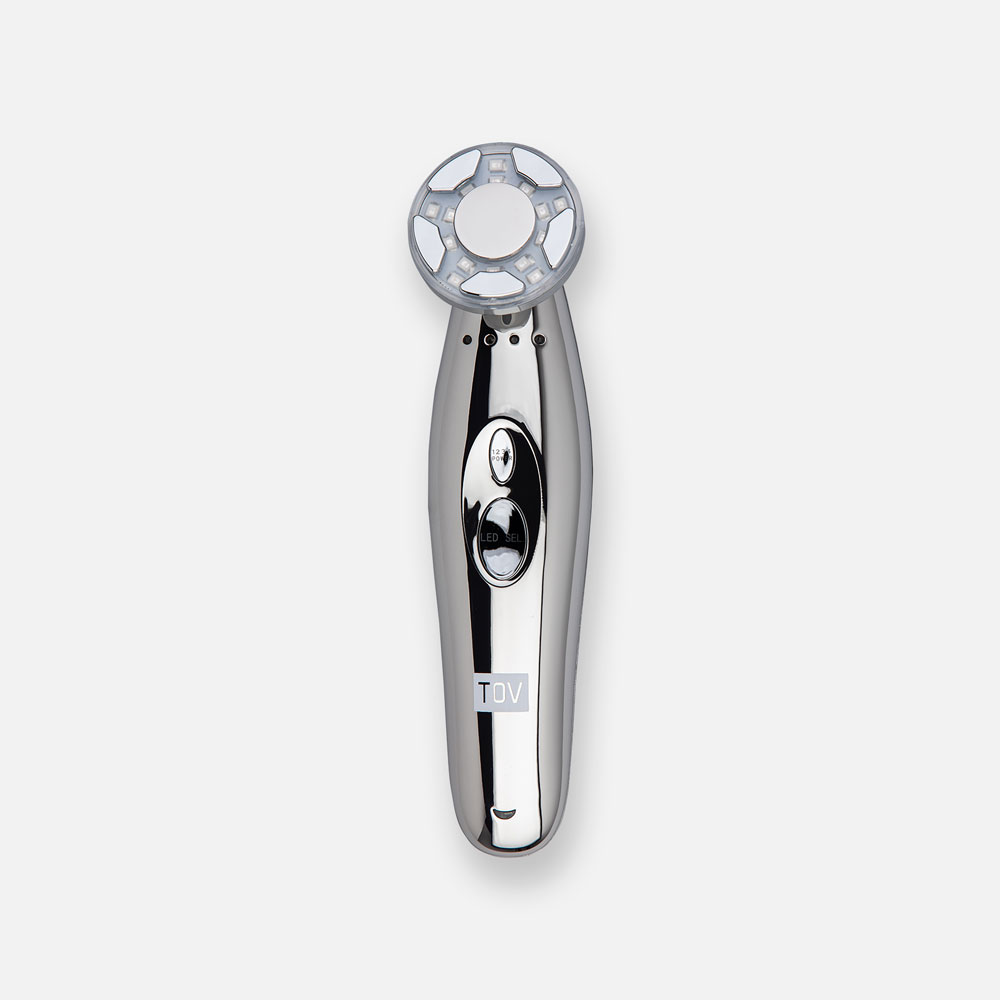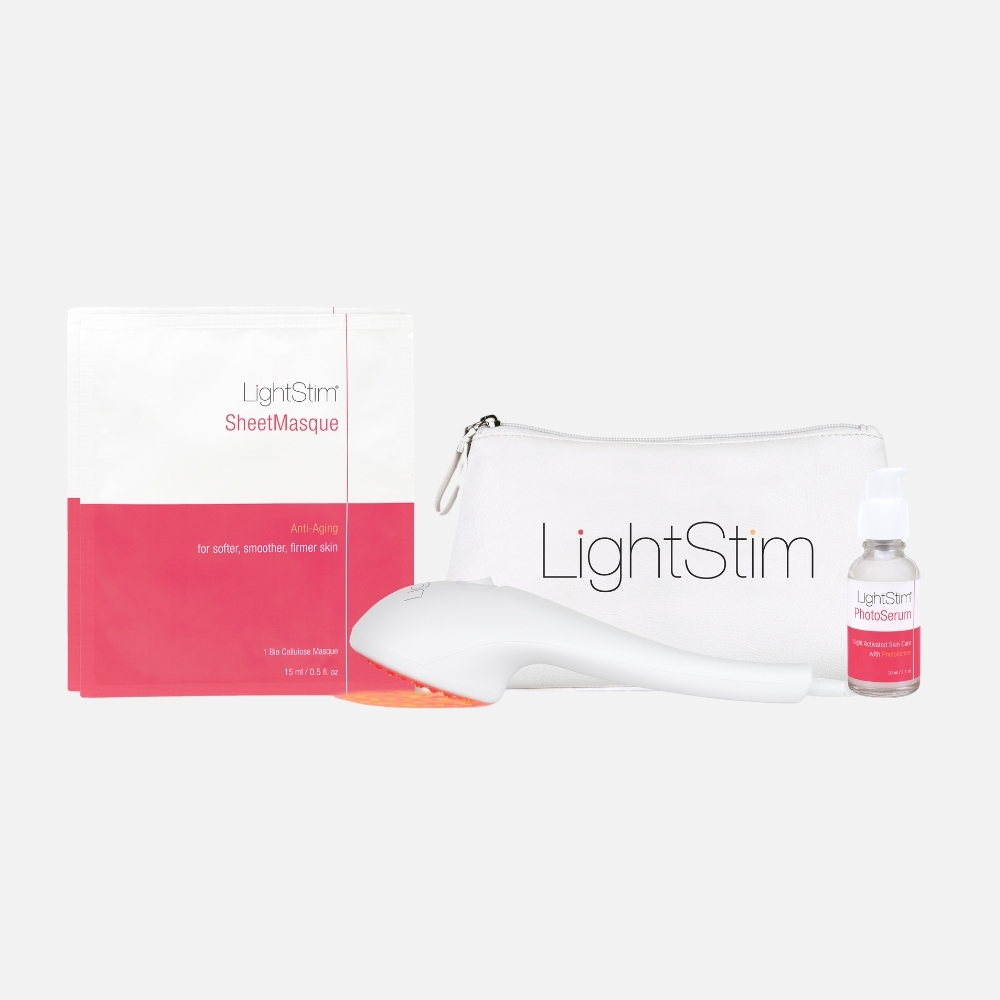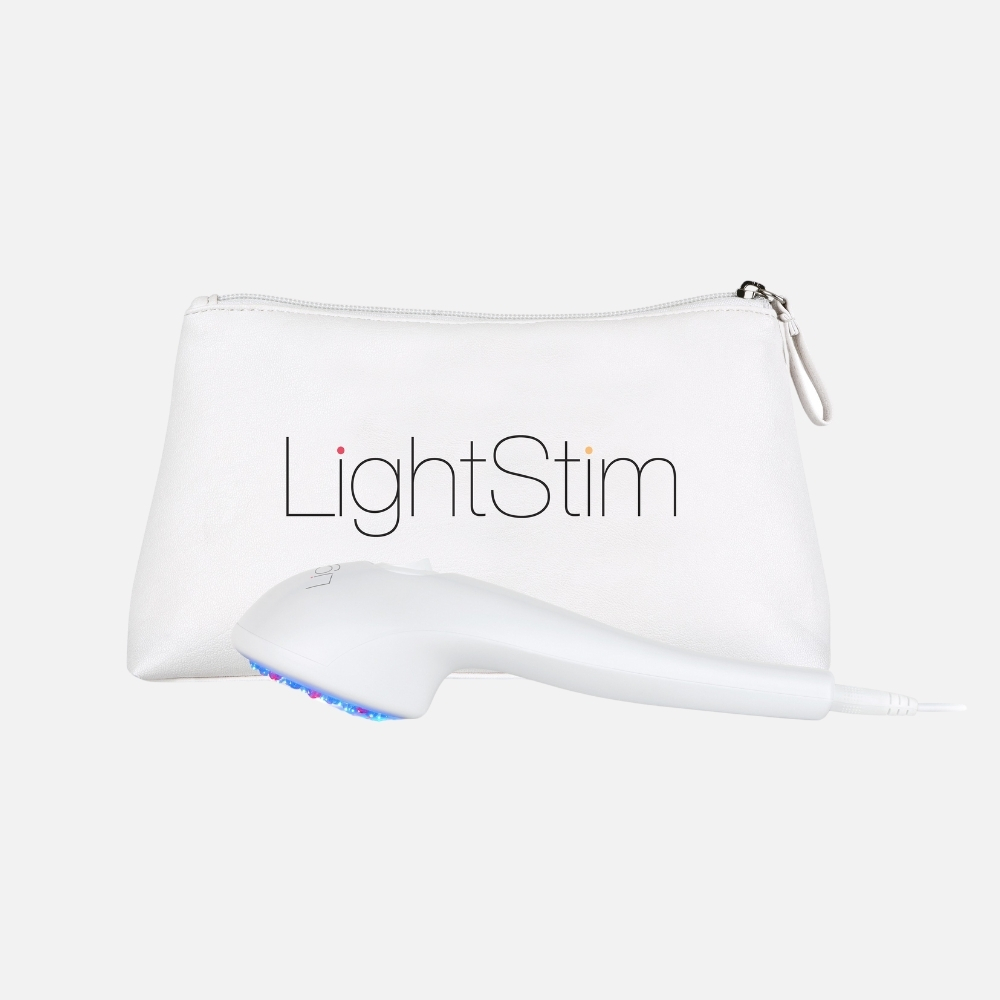
LED light therapy for skin looks like a mystical art at first glance. You shine some light on your skin, and it gets healthier and happier! That couldn’t be a real thing, right? Well, dear reader, it’s one hundred percent real and immensely easy to use. This technology, originally developed by NASA many years ago, utilizes the different wavelengths generated by light-emitting diodes to penetrate different depths of your skin and help it out. The positive effects of using LED light therapy include boosting collagen and elastin production, relieving pain, and even clearing acne. Keep on reading to learn more about this powerful at-home treatment option.
- What is LED Light Therapy For Skin?
- How Does LED Light Therapy Work?
- What Are the Side Effects of LED Light Therapy?
- Our Favorite At-Home LED Devices
What is LED Light Therapy For Skin?
LED Light Therapy is a form of skincare and health treatment where you expose skin to various colors or wavelengths of light to achieve a specific desired result. It’s also occasionally referred to as low-intensity light therapy or photobiomodulation. In the 1980s, NASA discovered the benefits of LED light when testing it as an option to boost plant growth for deep space missions. While the experiments weren’t a success for growing food in space, they noted different lights created differences in the plants. From there, the rest is history: NASA and other scientists continued to experiment with LED lights. They continued to find more and more practical applications, especially when used on the human body.
Often, people will use large panels or even LED beds to expose as much of the body as possible. Today, we’re focusing on at-home devices, so don’t worry about those more intensive treatments. Just know they are even more intense and effective! If an esthetician, dermatologist, or spa near you offers them, give them a shot!
As mentioned earlier, the effects of the treatment depend on the colors or wavelengths of light used. Let’s dive into what each color of light can do for your skin:
Red Light
You may know red LED light therapy best for its anti-aging effects, but there’s more to it than that. Red light therapy can have the following effects on skin cells when used regularly:
- Reduced inflammation for better overall skin health and anti-aging.
- Increased collagen production for reduced fine lines & wrinkles.
- Greater circulation/blood flow for healthier, glowing skin.
The wavelengths for red light therapy occur in the 600-700 nanometer range.
Blue Light
While less versatile than red, blue LED light is best known as the color of light for acne treatment! In short, the waves of light hit the surface of your skin and trigger a chemical reaction that kills off p. acnes bacteria. It’s also suggested that blue LED light can target your sebaceous oil glands and make them less active, thereby producing less oil.
The wavelengths for blue light therapy occur around 450 nanometers.
Infrared Light
Unlike the previous two colors, we can’t really see infrared light. Don’t worry, it’s definitely there, and it’s quite active. Several medical studies currently suggest that infrared lights aid in wound healing and neural stimulation. The numerous benefits include:
- Relieving pain, stiffness, and muscle soreness.
- Soothing fatigue from arthritis.
- Speeding the healing of skin wounds and bruising.
The wavelengths for infrared light therapy occur around 780 to 1000 nanometers.
Green Light
There’s less evidence backing up green light therapy, but it’s suggested that it can help address hyper-pigmentation. Given the efficacy of LED therapy, I’m inclined to suspect green light is just as helpful. We tend to like using this color in tandem with the others for maximum benefit.
The wavelengths for green light therapy occur around 500 nanometers.
How Does LED Light Therapy Work?
Great question! The short answer is that different wavelengths of light can penetrate different depths of our skin. Blue light, with a longer wavelength, only makes it to around the surface. Infrared light, on the other hand, can penetrate down to the nerves and deeper cell tissue. From there, any rays of LED light that make it to their destination interact with the cells there and trigger chemical reactions.
Red LED light therapy is the best understood reaction. When the red light reaches the skin cells in the dermis, it triggers the cell’s ‘power generator’, the mitochondria, to create ATP. From there, ATP acts as an energy currency to tell other cells, like fibroblasts that create collagen and elastin, to get to work. Scientists are still not clear exactly why this happens, but they are confident it does occur. I am positive we will be reading about some new discoveries in LED light treatment in the next decade!
What Are The Side Effects of LED Light Therapy?
There are no known side effects to LED light therapy. The LED lights utilized in skincare devices do not generate UV rays, so there is no risk of anything similar to sun damage. This is a huge part of what makes it so appealing to a large number of skincare enthusiasts looking to up their at-home routines. That being said, there are multiple precautions to take. As wonderful as LED light treatments are, your wellness and health matter much more. Please do not use LED light therapy if any of the following conditions or situations apply to you:
- If you are currently using Accutane or have used Accutane in the past six months.
- If you are sensitive to lights, such as epilepsy or migraines.
- Likewise, if you have melasma or hyperpigmentation that is triggered by warmth.
- If you have any suspicion skin lesions or known skin cancer.
- If you are using any photo-sensitizing drugs.
Even with these points, they are mostly precautions. It is always better to be safe than sorry in my book.
Our Favorite At-Home LED Devices
Now that we’ve established how awesome LED light therapy is, let’s go over the best LED devices we carry at Art of Skin Care.
LightStim
If you’re looking to focus on just LED light therapy, accept no substitutes. LightStim offers powerful handheld devices are the pinnacle of at-home treatment as far as LED concerned. It also helps that they are the only LED devices that are FDA-approved to treat their respective issues.
Available at-home devices we carry at AOS are LightStim for Wrinkles and LightStim for Acne. Each one uses a medley of different lights at slightly different wavelengths to maximize effectiveness. Having used every device we carry, I can attest that LightStim offers the most accessible and easy-to-use device. All you have to do is turn it on, hold it on the desired area for three minutes, then rinse and repeat. Personally, I enjoy doing a little LightStim treatment while I unwind on the couch in the evening and watch the news. Using the LightStim is just that simple.
Time Master Pro
LED light therapy isn’t the focus of the Time Master Pro, but rather a powerful add-on. Think of it like adding a booster to your favorite smoothie to make it even healthier. The main star of the show here is ultrasound technology that is powerfully active on skin to induce collagen production. When used in tandem with LED lighting, this device gets results like nothing else. After using the TMP, your skin will be full, plump, and absolutely glowing.
Well, I hope you learned a whole lot about LED Light Therapy today! It’s an exciting, powerful technology and can really give your skin a big boost. If you have any questions, let me know in the comments below. I’m always happy to chat a little more about skincare. Until next time!

Unsure where to start? Reach out for a free skincare checkup, and our licensed estheticians will optimize your routine for the best results. We’ll be here every step of the way!



Comments (2)
What about the LED face masks that are all the rage right now? Seems a new one pops onto the market every day. I hear great things about them, and then I hear don’t waste your money. Some are affordable, and others would require a home equity loan to finance. What is the truth?
Hi Randy! LED lights need to be held against the skin for optimal results, which many of these face masks do not do. They also make it impossible to avoid the lights going right into your eyes, which can be bad for the eyes according to new studies.